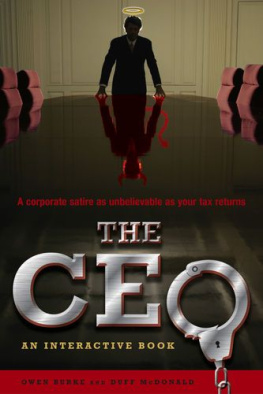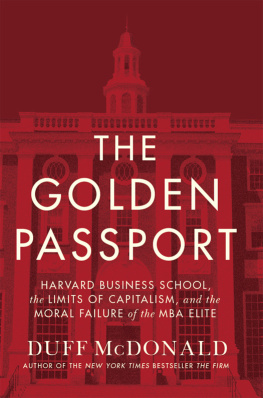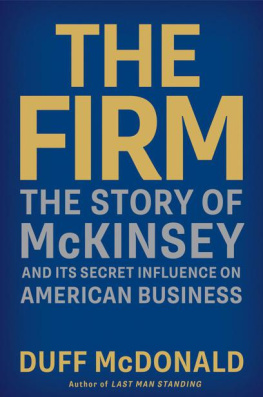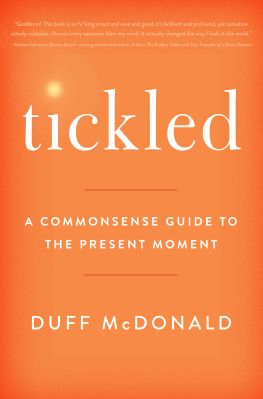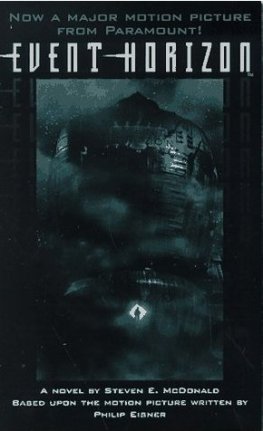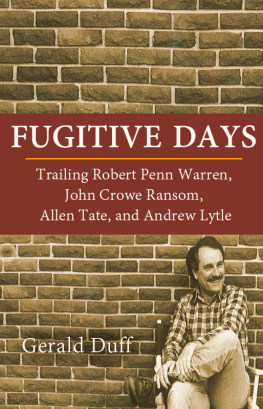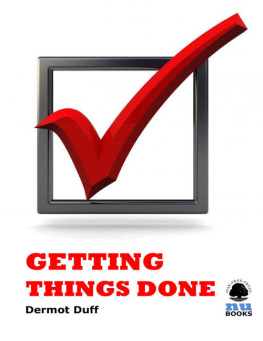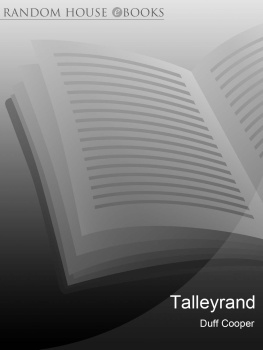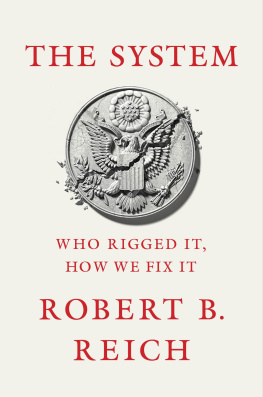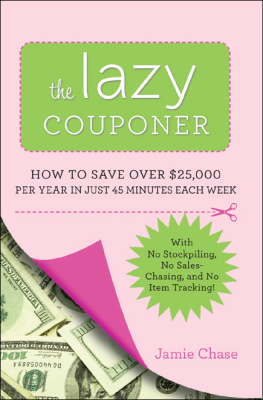Duff McDonald - Last Man Standing: The Ascent of Jamie Dimon and JPMorgan Chase
Here you can read online Duff McDonald - Last Man Standing: The Ascent of Jamie Dimon and JPMorgan Chase full text of the book (entire story) in english for free. Download pdf and epub, get meaning, cover and reviews about this ebook. year: 2009, publisher: Simon and Schuster, genre: Detective and thriller. Description of the work, (preface) as well as reviews are available. Best literature library LitArk.com created for fans of good reading and offers a wide selection of genres:
Romance novel
Science fiction
Adventure
Detective
Science
History
Home and family
Prose
Art
Politics
Computer
Non-fiction
Religion
Business
Children
Humor
Choose a favorite category and find really read worthwhile books. Enjoy immersion in the world of imagination, feel the emotions of the characters or learn something new for yourself, make an fascinating discovery.
- Book:Last Man Standing: The Ascent of Jamie Dimon and JPMorgan Chase
- Author:
- Publisher:Simon and Schuster
- Genre:
- Year:2009
- Rating:4 / 5
- Favourites:Add to favourites
- Your mark:
- 80
- 1
- 2
- 3
- 4
- 5
Last Man Standing: The Ascent of Jamie Dimon and JPMorgan Chase: summary, description and annotation
We offer to read an annotation, description, summary or preface (depends on what the author of the book "Last Man Standing: The Ascent of Jamie Dimon and JPMorgan Chase" wrote himself). If you haven't found the necessary information about the book — write in the comments, we will try to find it.
Last Man Standing: The Ascent of Jamie Dimon and JPMorgan Chase — read online for free the complete book (whole text) full work
Below is the text of the book, divided by pages. System saving the place of the last page read, allows you to conveniently read the book "Last Man Standing: The Ascent of Jamie Dimon and JPMorgan Chase" online for free, without having to search again every time where you left off. Put a bookmark, and you can go to the page where you finished reading at any time.
Font size:
Interval:
Bookmark:
Thank you for downloading this Simon & Schuster ebook.
Get a FREE ebook when you join our mailing list. Plus, get updates on new releases, deals, recommended reads, and more from Simon & Schuster. Click below to sign up and see terms and conditions.
CLICK HERE TO SIGN UP
Already a subscriber? Provide your email again so we can register this ebook and send you more of what you like to read. You will continue to receive exclusive offers in your inbox.

For the two who just missed each other
Dr. Donald John McDonald
(10/23/3709/09/08)
&
Marguerite Scott McDonald
(11/13/08)
On the morning of September 18, 2008, the phone rang in Jamie Dimons office. It was Hank Paulson, the secretary of the treasury. For the second time in six months, Paulson had a pressing question for the chairman and CEO of JPMorgan Chase. Would Dimon be interested in acquiring the floundering investment bank Morgan Stanleyat no cost whatsoever?
During one of the most tumultuous months in the history of the stock marketstocks fell 27 percent between August 29 and October 10, 2008the storied investment bank Lehman Brothers had already failed, the brokerage giant Merrill Lynch had been sold to Bank of America, and the insurance heavyweight AIG had received an emergency loan of $85 billion from the federal government. One of the only remaining questions was whether it would be Morgan Stanley or Goldman Sachs that fell next. The government was desperately seeking to stave off what could have been a wipeout of Wall Street. And here was Paulson, offering Dimon Morgan Stanley for the bargain basement price of $0 per share.
At the governments urging, Dimon had agreed to take over Bear Stearns for $2 a share in March 2008, in a whirlwind 48-hour deal. (The price was ultimately raised to $10.) The transaction had catapulted JPMorgan Chase to the forefront of the financial industry and established Dimon as the governments banker of last resort. Some are coming to Washington for help, Sheila Bair, chairman of the Federal Deposit Insurance Corporation, later said. Others are coming to Washington to help.
Considered in a historical light, a takeover of Morgan Stanley would have been much more profound than that of Bear Stearns. Dimon was already being compared to John Pierpont Morgan, the legendary banker who was his companys founder, and this deal would have meant a reassembling of the empire that had been forcibly dismantled during the Great Depression, when banks were barred from the securities trade. Dimon, in other words, would have been sitting atop the very same empire his firms namesake had lorded over nearly a century before.
But it was not to be. Dimon reportedly said hed discuss it with his board, but his initial view was that his bank shouldnt do itit would involve a bloodbath for employees on both sides, a doubling of risk, and years of distraction for the company. Whats more, the ultimate cost of a deal would have been quite substantial, whether in terms of layoffs, writedowns, or a de-risking of Morgan Stanleys balance sheet. (Dimon has always said it doesnt make sense for two major investment banks to merge.) Moreover, his team was already busy preparing a bid to take over the deposits and loans of the Seattle-based bank Washington Mutual, also on the verge of failure.
The amazing thing: Paulson really didnt have anyone else to turn to. Dimon was quite literally the only chief of a major bank to have properly prepared for the hundred-year storm that had hit Wall Street with such vengeance. Everyone had known that the capital base of the financial sector had been in desperate need of shoring up, but Jamie Dimon was alone among his peers in having actually done something instead of just talking about it. As a result, of all the actions taken by the government in the fifteen months since the crisis had started, the only thing that had really worked was giving it to Jamie. Which is exactly why a desperate Paulson was trying to do it again. But he proved unable to persuade Dimon to pull off a third major deal in 2008. Morgan Stanley eventually pulled through. But even without this deal, Dimons reputation continued to ascend to new heights. In the midst of the most serious and far-reaching financial crisis since the 1930smuch of it caused by plain old avarice and bad judgmentDimon and JPMorgan Chase stood apart. Much of the melodramatic coverage of Wall Street postcrisis has focused on its flawsthe hubris and the greed. Jamie Dimons story contains the oppositesthe values of clarity, consistency, integrity, and courage. By sticking to them, Dimon has unquestionably become the dominant banking executive of his era. Banking is a very good business if you dont do anything dumb, says Warren Buffett. Morris Shapiro said long ago that there are more banks than bankers, and thats fundamentally the problem. But Jamie is a banker from head to toe.
Jamie Dimon is a banker by blood. His paternal grandfather, Panos Papademetriou, was a Greek from Smyrna who worked in banking before leaving Greece during its war with Turkey. He arrived in New York in 1921, by way of France and Canada, settling in Manhattan and promptly shortening his last name to Dimon. The mischievous immigrant later offered his son two stories about the changing of his name. In the first, he sought work as a busboy but found that no one would hire Greeks. Dimon sounded Frenchand Papademetriou was fluent in Frenchso he changed it to get a job. In the second version, he fell in love with a French girl and chose the name for amorous purposes. Either way, he clearly felt he would do better with an American-sounding French name than with a Greek one.
Panos didnt last long as a busboyfamily lore has it that he was fired, and he subsequently found work at the recently opened branch of the Bank of Athens, a subsidiary of the National Bank of Greece. After working his way up to vice president in charge of loans, he left the bank in 1949 to become a stockbroker at Shearson Hammill.
Panoss son Theodore became a stockbroker, too, joining his father at Shearson Hammill in 1953, a year after his marriage to Themis Annastasia Kalos, also the child of Greek immigrants. The brokerage, founded at the turn of the twentieth century, had a national presence as well as a reputable investment banking operation. Shortly thereafter, Theodore and his wife moved to East Williston, Long Island. Just 25 miles from New York City, the village was enjoying a burst in population growth as Americans embraced the postwar suburban ideal.
Their first son, Peter, was born in 1954. Fraternal twins soon followedJamie and Ted Jr.on March 13, 1956. Ted Sr., who commuted to Shearson Hammills offices on 44th Street and Fifth Avenue in his gray Convertible Dodge, soon grew tired of the commute, and persuaded his wife to move back to New York. The family of five settled in a rental apartment in Jackson Heights, Queens, where young Jamie attended PS 69 from kindergarten through the fifth grade.
Jamie was a precocious child. His mother remembers him looking at her as if he was an adult as early as the age of two. He also felt a need to keep up appearances. Even as a youngster, he refused to come out of his bedroom in his pajamas if his parents had guests. He was also extremely active, prone to leaping across the room rather than walking. Fluent with numbers from a young agehe remembered phone numbers as a small childDimon launched his first business at the age of six, attempting to sell greeting cards. The effort failed, but there was no doubt about his enterprising nature.
Next pageFont size:
Interval:
Bookmark:
Similar books «Last Man Standing: The Ascent of Jamie Dimon and JPMorgan Chase»
Look at similar books to Last Man Standing: The Ascent of Jamie Dimon and JPMorgan Chase. We have selected literature similar in name and meaning in the hope of providing readers with more options to find new, interesting, not yet read works.
Discussion, reviews of the book Last Man Standing: The Ascent of Jamie Dimon and JPMorgan Chase and just readers' own opinions. Leave your comments, write what you think about the work, its meaning or the main characters. Specify what exactly you liked and what you didn't like, and why you think so.

